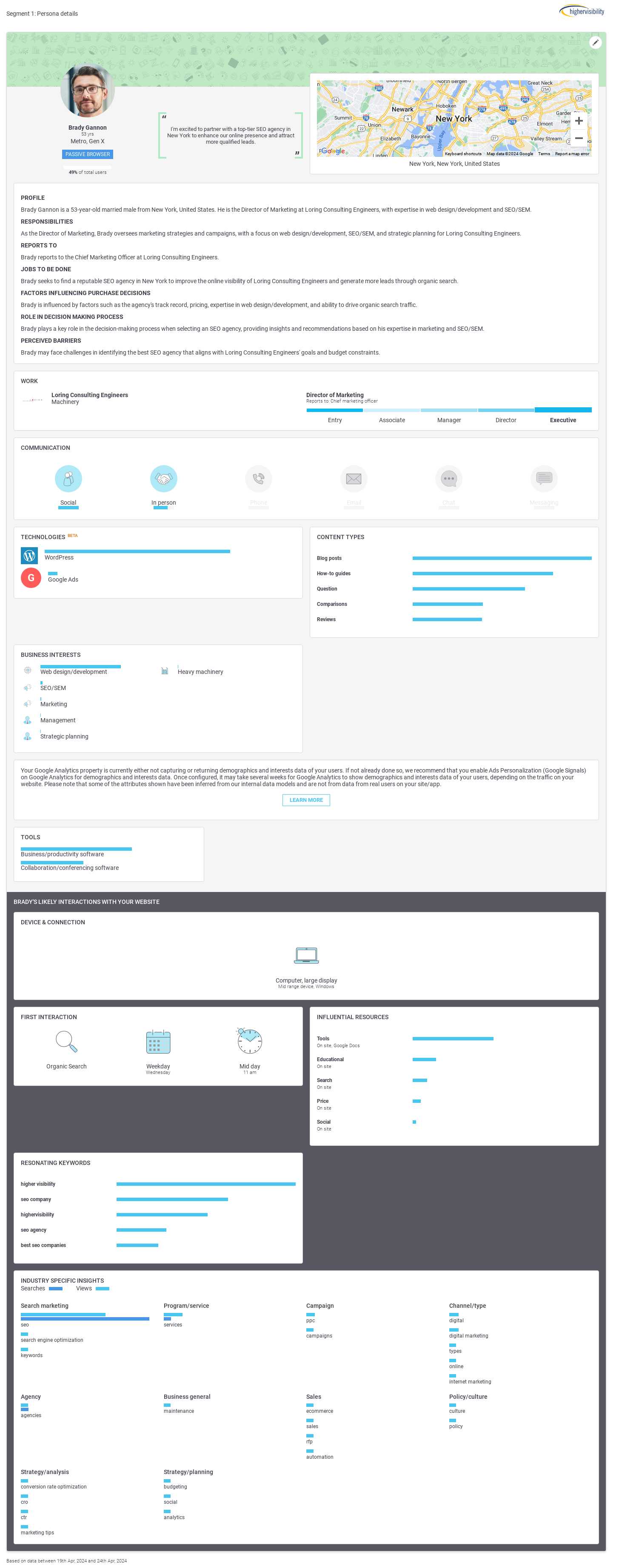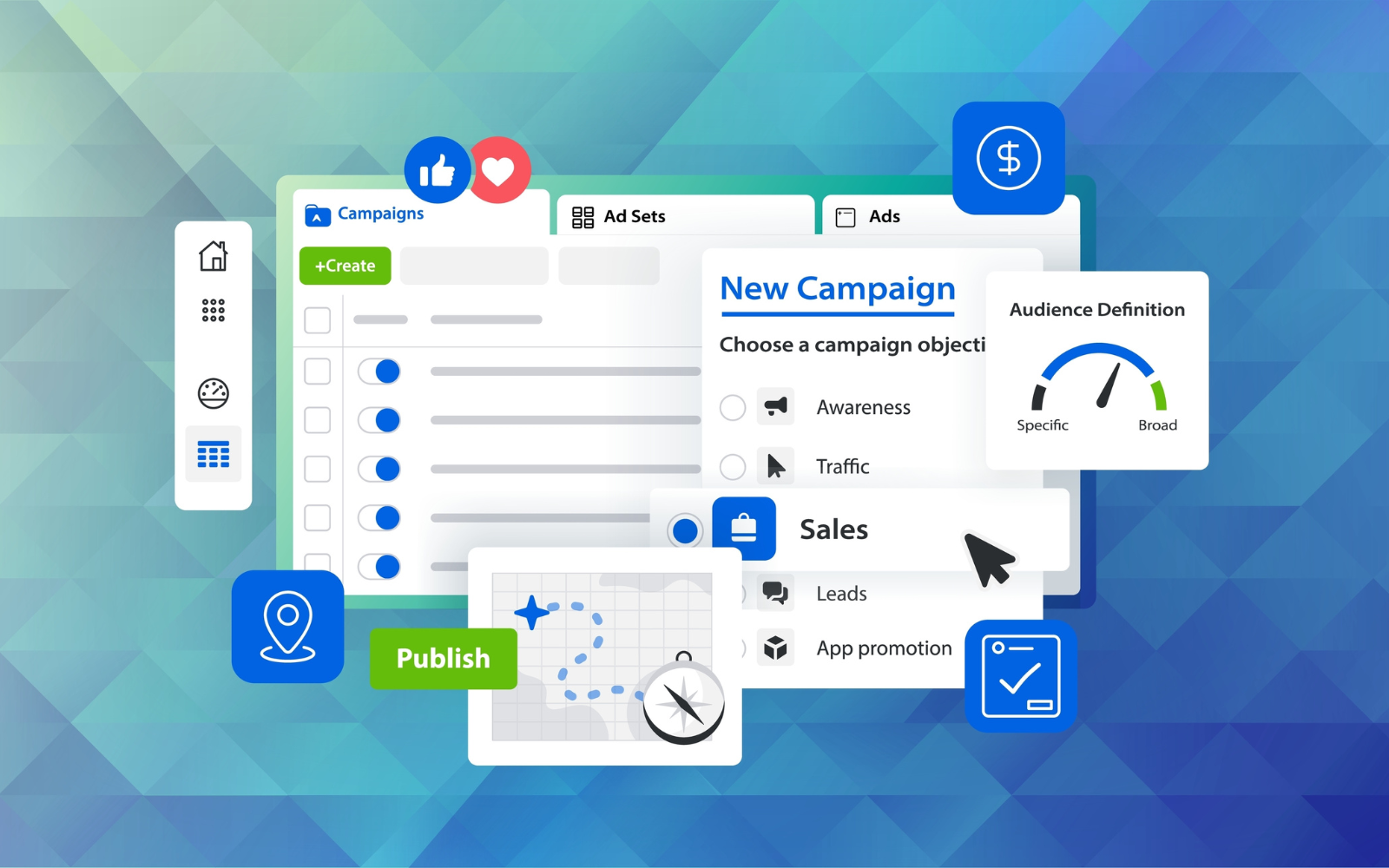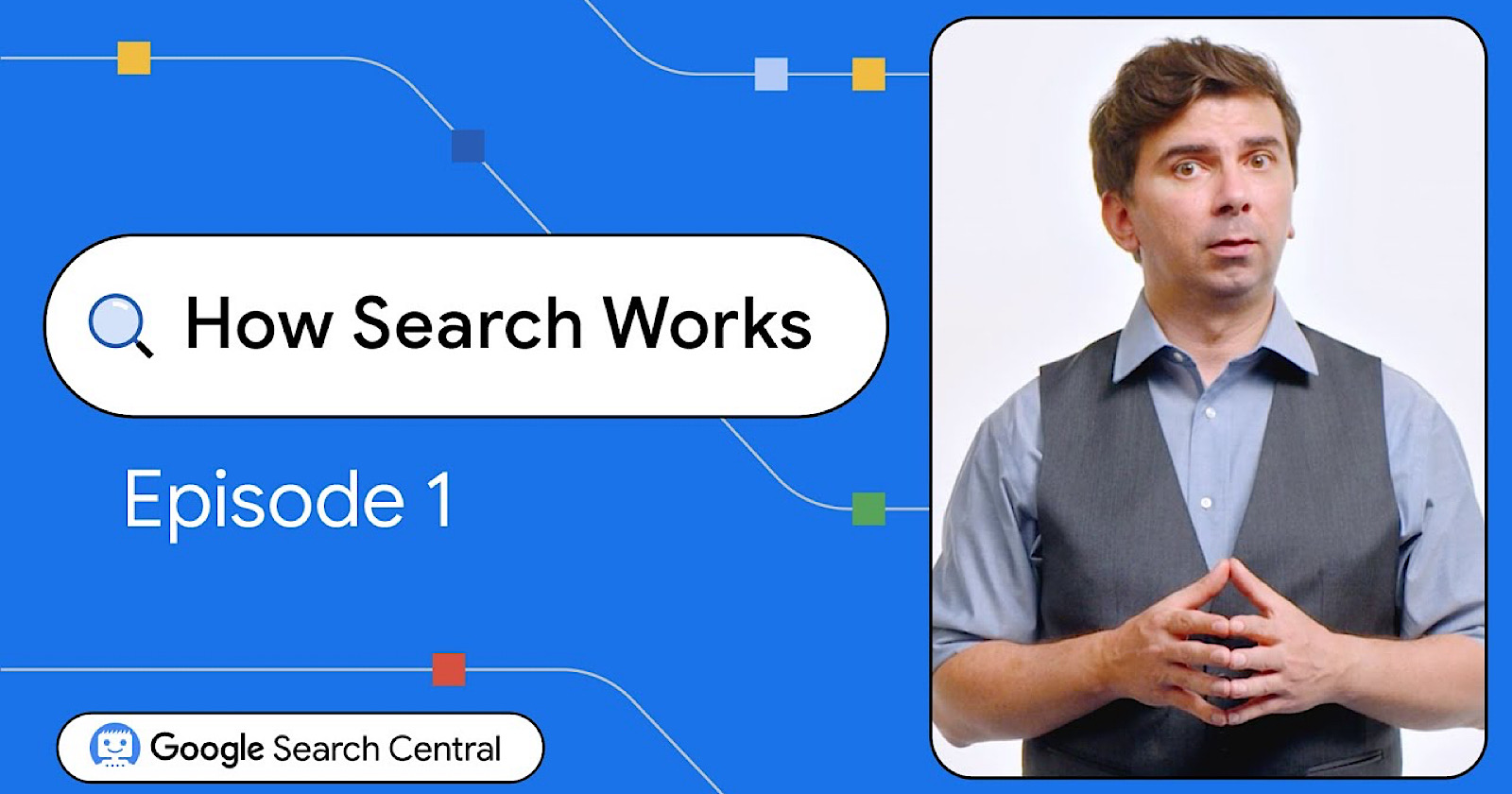Successful SEO content should act as a guide – not just around your website, but for users on their specific journey to answers and solutions.
Visitors to your website arrive with different intentions and levels of awareness.
Some may be casually browsing your site for the first time, others might be actively researching your products or services, and others may be on the verge of making a purchase.
So, what should you do to ensure your website caters to these diverse goals and needs? And how should you use content to facilitate the journey from early-stage prospect to repeat customer?
The answer: content mapping.
In this post, we’ll cover the importance of content mapping for SEO and explain how to develop a content strategy that helps transform visitors into customers.
Let’s dive in.
What Is Content Mapping?
Content mapping is the process of aligning content with the specific needs of your target audience at various stages of the buyer’s journey.
It involves defining your audience, understanding what content they need at different phases of the decision-making process, and delivering that content to guide them from initial awareness to a purchase decision (and beyond).
In other words, content planning is about organizing your site so that the right content reaches the right user at the right time.
Why Is Content Mapping Important For SEO?
Creating a content map can bolster your SEO efforts in multiple ways. Here are the key reasons content mapping matters for SEO.
Better Content Relevance And Targeting
Google aims to surface the most relevant results it can find for users’ search queries.
The more relevant the content, the more likely it is to rank higher in search results.
Content mapping helps increase your content’s relevance by aligning it with the search intentions of your target audience at different stages of the buying journey.
Increased User Engagement
Relevant content that directly addresses the goals and needs of visitors is also more engaging.
Better engagement means longer session durations, lower bounce rates, and more frequent interactions – all of which signal to Google that your site is a quality source of content worth ranking prominently in its search results.
Improved Keyword Optimization
Content mapping involves identifying the keywords your prospects use along the buyer’s journey.
Once you know which keywords people use at various stages of the customer lifecycle, you can incorporate those terms into the appropriate pages on your website.
Targeting a broad range of keywords lets you cater to a broader range of user intentions and boosts your organic visibility.
Structured Content Delivery
A well-planned content map helps create a clear and organized content architecture for your site.
A logical site structure improves user experience and makes it easier for search engines to crawl and index your pages correctly.
Moreover, strategic linking between thematically-related content can enhance your site’s authority for particular topics.
Support For Content Updates
A content map provides a complete overview of your site’s content, laying out the relationship between different pieces of content and their respective stages in the buyer’s journey.
With a map in hand, it’s easier to see which parts of your site are outdated or underperforming and to spot new opportunities to develop more content.
Remember, search engines favor fresh, up-to-date content, which can help maintain or improve your rankings over time.
How To Create An Effective Content Map In 6 Steps
Now, let’s break down the content mapping process.
1. Define Your Buyer Personas
The first step is to develop a clear understanding of your various customer segments.
The better you understand your ideal customers’ needs, goals, motivations, and objections, the easier it will be to create content that serves them.
The goal here is to create buyer personas (or customer avatars) that represent your target audience.
Start by gathering as much information as possible on your existing customers through surveys, interviews, customer service data, and website analytics.
Look for demographic data such as age, location, income level, and psychographic data, including personal interests, buying preferences, and lifestyle choices. Learn the challenges that lead them to seek products and services like yours.
Once you’ve collected this data, it’s time to build out your buyer personas. Each persona should be detailed and specific, like this:
Buyer Persona: “Digital Marketer Dan”
- Demographics: Age 32, lives in San Francisco, single, masters in marketing.
- Professional role: Senior digital marketing manager at a tech startup.
- Goal: To increase brand awareness and lead generation through innovative digital strategies.
- Challenges: Struggles with limited budget and resources; needs tools that maximize ROI.
- Behavioral traits: Highly active on LinkedIn, relies on industry blogs and webinars for ongoing education.
- Decision factors: Prioritizes cost-effective software and tools with strong user support.
- Preferred content types: Enjoys in-depth guides, case studies, and free webinars.
Here is a sample buyer persona we developed for my agency, HigherVisibility:
 Screenshot from author, May 2024
Screenshot from author, May 20242. Map Out The Buyer’s Journey
The next step is to map out the customer journey for each of your personas. This will guide you in creating content that meets the needs of different personas at every stage of the decision-making process.
Typically, the customer journey is made up of three main phases:
- Awareness: Here, the persona first becomes aware of a problem or need. For example, “Digital Marketer Dan” realizes he needs to improve his digital marketing ROI. He heads to Google for ideas and clicks through to one of your blog’s educational posts discussing various digital marketing strategies.
- Consideration: At this point, your persona will be evaluating different solutions to their more fundamental problem. For example, Dan has realized that his team needs a new digital marketing platform to optimize campaigns more effectively. Now, he’s researching the features and benefits of different tools to see which solution can best meet his needs. To get a better sense of what your company offers, Dan reads through a few of your comparison guides and watches your product demonstration videos.
- Decision: In this final phase, your persona has considered their options and is primed to make a buying decision. For example, Dan is now almost ready to buy. To alleviate any last-minute concerns, he reads through positive feedback from other customers on your testimonials page and then finally reaches for his bank card.
Read more: How To Create A Customer Journey Map
3. Map Existing Content To Different Stages Of The Buyer’s Journey
Now, it’s time to categorize your existing content according to where it fits into the customer journey.
A common approach here is to separate content into three buckets:
- Top of the funnel (TOFU): This content caters to visitors in the awareness stage. The goal here isn’t to make a sales pitch. Instead, it’s about providing useful information, establishing your brand as a trustworthy source of insights, and raising awareness that your solution exists. TOFU content includes blog posts, infographics, and educational videos about topics within the remit of your brand.
- Middle of the funnel (MOFU): This content caters to those in the consideration stage. It delves deeper into the benefits and features of your solution, showing visitors how it can help address their problems. Examples include webinars, case studies, and product overviews.
- Bottom of the funnel (BOFU): This content is designed to help purchase-ready visitors commit to a final decision. Since users are now familiar with what you can offer them, the goal is to address any lingering objections or questions standing in the way of a sale. BOFU content includes special offers, free trials, shipping and refund policy pages, customer reviews, and testimonials.
4. Optimize Existing Pages For The Right Keywords
After identifying where each page fits into the customer journey, you’ll need to ensure those pages are optimized for the appropriate keywords.
But before you get started, we recommend you first refresh and expand your current keyword list to make it as up-to-date and comprehensive as possible.
The aim is to build a complete picture of the type of queries people use when searching for TOFU, MOFU, and BOFU content related to your business. Be sure to include search intent and search volume data in your list.
Once your new keyword list is ready, make sure each page is optimized for a relevant primary keyword if it isn’t already.
Here are some best practices to keep in mind when optimizing your content for keywords:
- Match pages with keyword intent. Only assign a keyword to a page that genuinely addresses the search intent underlying that term. If you don’t yet have a page for a given keyword, you can add it to your content calendar (see Step 6).
- Update meta tags. Adjust the title tags, meta descriptions, and header tags to include your target keyword and any close variants. This not only helps Google understand the page’s relevance but can also encourage more click-throughs from the search results.
- Add keywords to the content. Integrate your target keyword into your content, especially the introduction, conclusion, and headers. All keyword placements should appear natural to the reader. Also, avoid cramming your text with keywords – keyword stuffing is considered spam by search engines and can damage your SEO efforts.
- Avoid keyword cannibalization. When two or more pages from the same website target the same term, search engines have difficulty determining which page to rank. This can dilute the ranking potential of all the competing pages. So, try to make sure that no two pages target the same primary keyword.
Read more: Keyword Research: An In-Depth Beginner’s Guide
5. Update Internal Links Strategically
Internal links are the routes your users take from one page to another. Not only are they essential for site navigation, but they also help distribute link equity (ranking power) from high-authority pages to lower-authority ones.
However, since your website’s ultimate goal is to generate conversions, each page should contain links that direct users to the next step along the buyer’s journey.
For example, suppose your business sells and installs smart home technology.
Your blog post about “Improving Home Security” (TOFU) might contain an in-text link to a related comparison guide about “The Best Smart Home Security Systems of 2024” (MOFU). Likewise, the comparison guide might contain a link directing readers to your testimonials page (BOFU).
6. Identify Content Gaps To Inform Your Editorial Calendar
The next step is to identify opportunities to create new content or add to existing content.
After expanding your keyword list in Step 4, you will most likely find several relevant keywords for which you don’t currently have content. These keywords can form the basis of your new content calendar.
When deciding which keywords to prioritize in your production schedule, keep the following in mind:
- Marketing goals: What is your primary marketing goal? If it’s to generate more traffic and brand awareness, targeting TOFU keywords should be your priority. If the aim is to maximize sales conversion rates, targeting BOFU keywords might be a better option.
- Relevance to your audience: Prioritize keywords that reflect your core audience’s needs. Ask whether there are any topics or questions your buyer personas are likely to have that your content doesn’t currently address.
- Search volume and competition: High-volume keywords are typically harder to rank for. Consider creating content clusters to increase your site’s authority for specific topics. Content clusters involve a central “pillar” page providing an overview of the main topic, which links to multiple “cluster” pieces covering related sub-topics in more depth.
Final Thoughts
Creating a content map is a powerful strategy for any business looking to increase their organic visibility and maximize their website’s ability to attract qualified visitors and convert them into customers.
By understanding and addressing the various needs of your audience throughout the buyer’s journey, you can position your brand as a valuable source of information and guide visitors from initial awareness to making a purchasing decision.
Building a content map requires careful planning and attention to detail. You should treat it as a living document that evolves with your audience’s needs and business goals.
Regularly reviewing and updating your content map will ensure it remains relevant and effective in guiding your content strategy.
More resources:
Featured Image: watchara panyajun/Shutterstock




